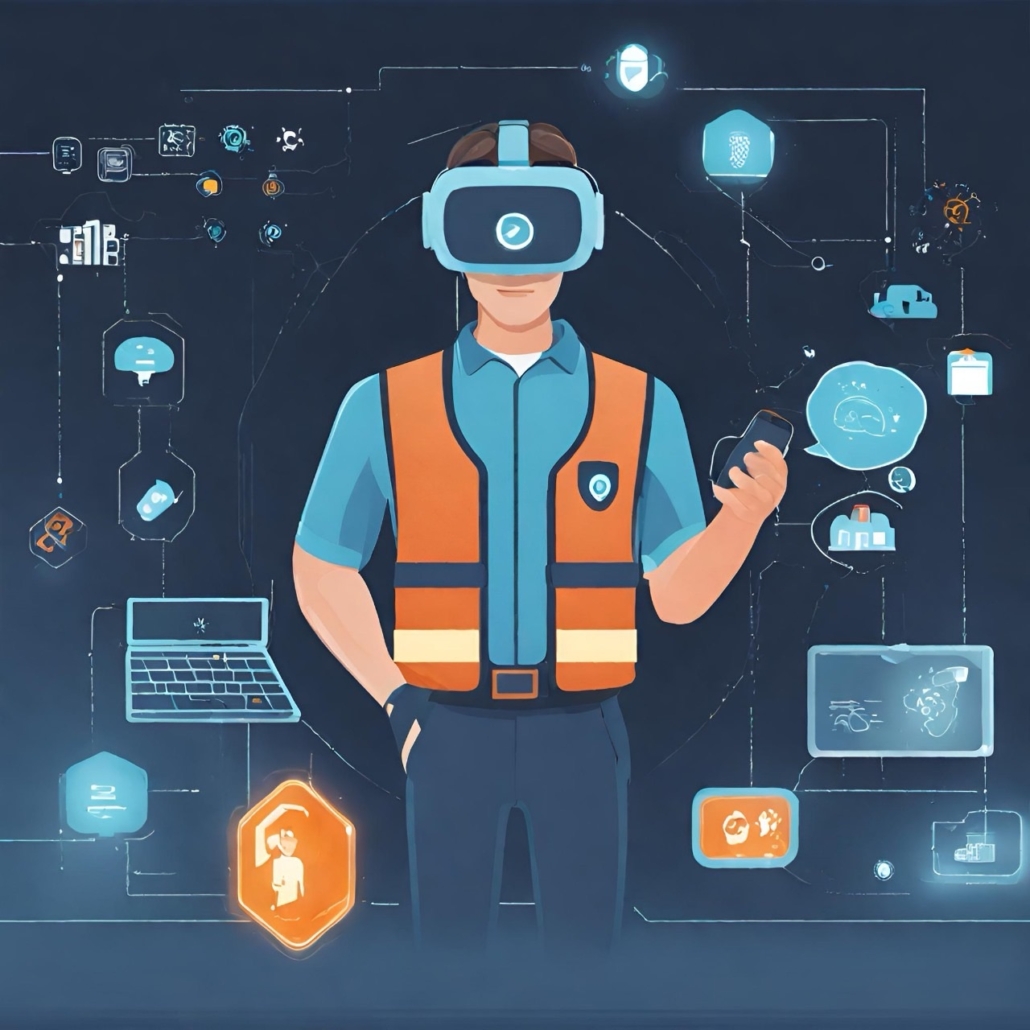Harnessing AI for Workplace Safety in the future: A Game-Changer for HSE Professionals.

In the evolving landscape of workplace occupational health safety, the integration of artificial intelligence (AI) is emerging as a transformative force, offering innovative solutions to protect workers from harm. As Occupational, Health, Safety, and Environment (OHSE) professionals, it's imperative to stay abreast of these advancements and leverage AI-powered safety products and services to safeguard our most valuable asset: our workforce.
In today's fast-paced industries, where safety risks abound and the consequences of accidents can be devastating, AI technologies offer a proactive approach to identifying, predicting, and preventing workplace hazards. Some of the cutting-edge AI safety solutions revolutionizing the OHSE landscape:
- Wearable Sensors: Wearable devices equipped with AI algorithms continuously monitor workers' movements and environmental conditions, detecting potential risks in real-time. These sensors provide immediate feedback to workers and supervisors, empowering them to take corrective actions and prevent accidents before they occur. Worth to mention some of these are GDPR regulated too.
- Predictive Analytics Platforms: AI-powered predictive analytics platforms analyze vast amounts of historical data to identify patterns and trends that may indicate potential safety risks. By leveraging machine learning algorithms, these platforms enable QHSE professionals to anticipate and mitigate hazards, ultimately reducing the likelihood of accidents. This could be beneficial for data based decision making for safety leaders.
- Computer Vision Systems: AI-driven computer vision systems analyze live video feeds from workplace cameras to detect safety hazards such as unguarded machinery or workers not wearing personal protective equipment (PPE). These systems provide real-time alerts to supervisors, enabling prompt intervention to address potential risks.
- Virtual Reality (VR) Training: VR-based training simulations offer immersive experiences that allow workers to practice safety procedures and emergency responses in a virtual environment. AI algorithms enhance these simulations by adapting scenarios based on user interactions, providing personalized feedback, and reinforcing safety protocols. This gives a practice to the person.
- Autonomous Mobile Robots (AMRs): AMRs equipped with AI-powered navigation systems autonomously navigate industrial environments to perform tasks such as inspection and material handling. These robots reduce the risk of accidents by taking on hazardous tasks that would otherwise endanger human workers.
- Safety Analytics Platforms: AI-driven safety analytics platforms analyze data from various sources to provide insights into workplace safety performance. These platforms uncover hidden patterns and leading indicators of safety risks, enabling QHSE professionals to implement targeted interventions to mitigate hazards.
- Emergency Response Systems: AI-based emergency response systems predict and mitigate potential emergencies such as fires or chemical spills. These systems automatically alert emergency responders, provide evacuation routes, and coordinate rescue efforts to minimize the impact on worker safety.
- Smart Personal Protective Equipment (PPE): Smart PPE embedded with AI sensors monitor workers' vital signs and detect environmental hazards. These innovative solutions provide real-time feedback and alerts, enhancing worker safety on the job.
By embracing AI-powered safety technologies, OHSE professionals can proactively address workplace hazards, mitigate risks, and ensure the well-being of their workforce. Together, let's harness the power of AI to create safer and healthier work environments for all.
Author :Shebin Abraham.






